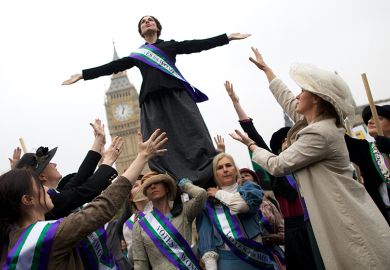Since Melville Herskovits, the American pioneer of African studies, published Dahomey: An Ancient West African Kingdom in 1938, there have been four serious scholarly studies of the great state of Fon-speaking peoples.
The polity began life at the end of the 16th century as an inland forest state in what is today the modern state of Benin. Dominated for decades by the powerful Yoruba empire of Oyo, Dahomey eventually challenged that hegemony and was to play a full part in the destruction of Oyo in the 19th century; but it was to be conquered by France at the end of that century. Its growth and period of eminence owed much to the state's militarisation and in particular its army's use of firearms. These were exchanged with European traders for slaves, a regional trade Dahomey was to dominate after its conquest of older coastal states in the course of the 18th century.
As suggested, we already know a great deal of this history. What has Stanley B. Alpern's study to add? The author is not the first westerner to be fascinated by a quirk of Dahoman military history; a number of the very numerous "king's wives", a western generic for women of the palace, constituted a military formation and, the evidence suggests, had done so from the early 18th century. From the third decade of the 19th century they became a major element in the Dahoman army in the field.
Throughout the world women appear only rarely to have figured as combatants in formal military formations before the 20th century, although they are immortalised in innumerable epics of both revolution and civil defence.
Cross-culturally, patriarchies appear to have insisted that a woman's place was the home and not the barracks. This near-universal exclusion was breached in Dahomey not least because of the unusually powerful political role of women in the state. For 18th and 19th-century European travellers, traders and diplomats, women in arms were remarkable and, searching for analogies, they were frequently to be called Amazons. There was prurience at work too, although Sir Richard Burton was alone in telling us what these warrior women wore under their kilts.
Alpern does very well in assembling most of the evidence about these intimidating women whose courage impressed even the Foreign Legion. He produces a very detailed picture from a wide variety of European and African sources.
He provides a readable narrative of Dahoman military history from the state's origins to its defeat by France in 1892, as well as providing a mass of information on what these women wore, ate and sang, how they were recruited, trained and mobilised. But there is little analysis here. What was it about this particular social formation that produced this historical rarity? Such questions should ultimately concern a reader more than whether these warriors were celibate or what kind of tobacco they preferred.
Richard Rathbone is professor of the modern history of Africa, School of Oriental and African Studies, University of London.
Amazons of Black Sparta: The Women Warriors of Dahomey
Author - Stanley B. Alpern
ISBN - 1 85065 362 3 and 361 5
Publisher - Hurst
Price - £35.00 and £12.95
Pages - 280
Register to continue
Why register?
- Registration is free and only takes a moment
- Once registered, you can read 3 articles a month
- Sign up for our newsletter
Subscribe
Or subscribe for unlimited access to:
- Unlimited access to news, views, insights & reviews
- Digital editions
- Digital access to THE’s university and college rankings analysis
Already registered or a current subscriber?



